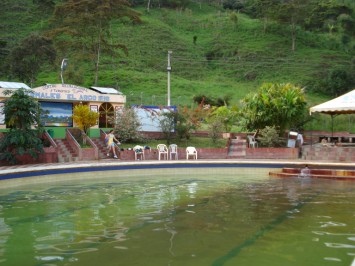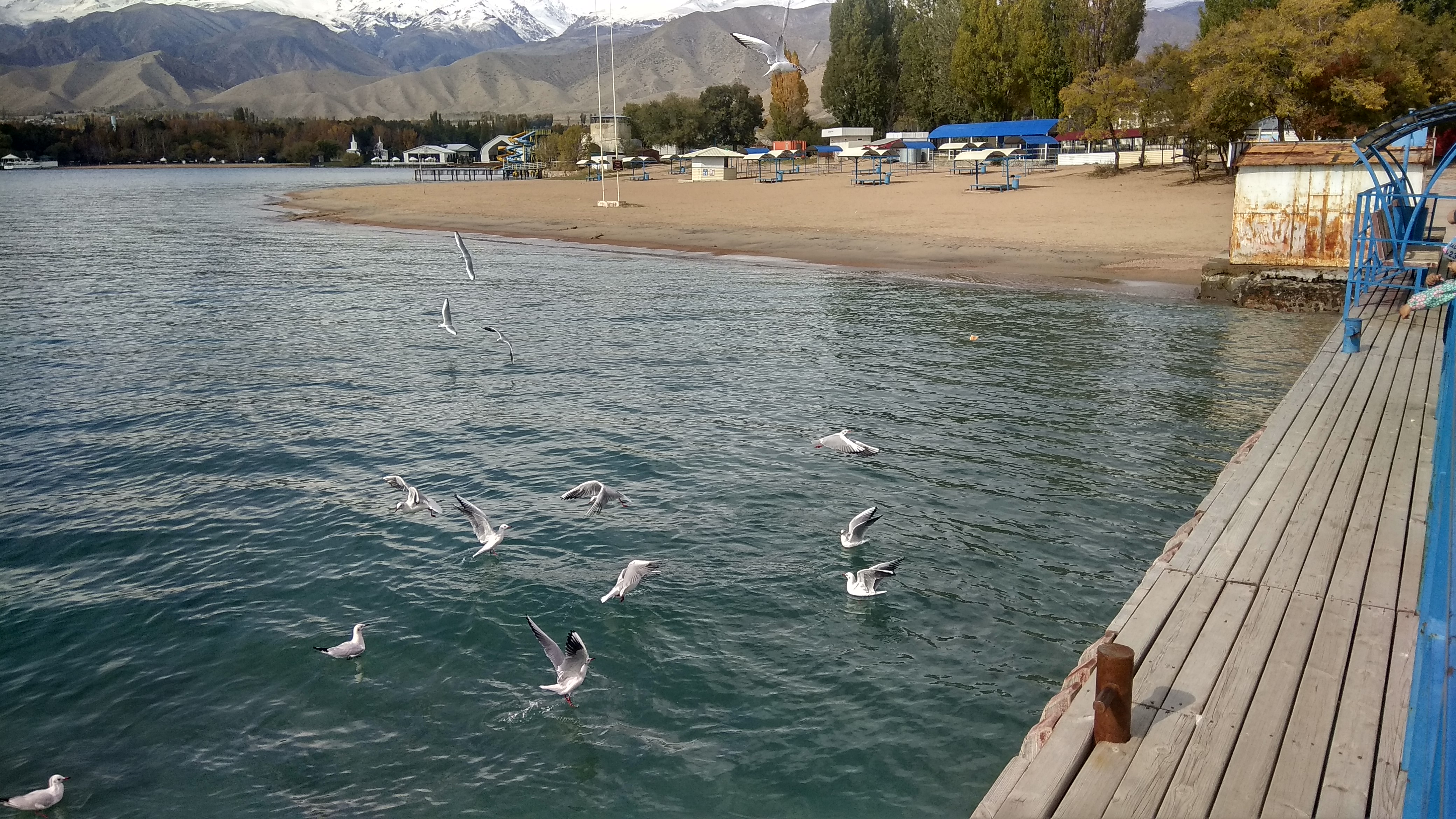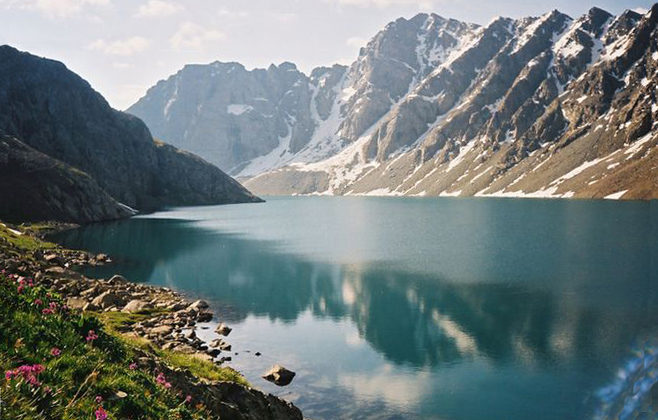|
Jeti-Ögüz Resort
Jeti-Ögüz ( ky, Жети-Өгүз, Jeti-Ögüz, lit=seven bulls) is a balneotherapic resort located at the Jeti-Ögüz Rocks near Issyk Kul in the Jeti-Ögüz District of Issyk-Kul Region of Kyrgyzstan, about 28 km west of Karakol, and near Jeti-Ögüz village. Its population was 337 in 2021. History The thermal springs of Jeti-Ögüz were known to local inhabitants since antiquity. The place became known to Europe after 1856 when Semenov-Tian-Shanskii first visited it. Since 1965 the resort operates year-round. In 1991, an important meeting between Boris Yeltsin and Askar Akayev Askar Akayevich Akayev ( ky, Аскар Акаевич (Акай уулу) Акаев, translit=Askar Akayevich (Akay Uulu) Akayev ; ; born 10 November 1944) is a Kyrgyz politician who served as President of Kyrgyzstan from 1990 until being ove ... took place in Jeti-Ögüz. Places of interest This resort is a common destination of interest for citizens of Kyrgyzstan, as well as a pop ... [...More Info...] [...Related Items...] OR: [Wikipedia] [Google] [Baidu] |
Issyk-Kul Region
Issyk-Kul Region ( ky, Ысык-Көл облусу, Ysyk-Köl oblusu; russian: Иссык-Кульская область, Issyk-Kulskaya oblast) is one of the regions of Kyrgyzstan. Its capital is Karakol. It is surrounded by Almaty Region, Kazakhstan (north), Chüy Region (west), Naryn Region (southwest) and Xinjiang, China (southeast). It takes its name from Lake Issyk-Kul ("warm lake"), the world's second-largest high altitude lake. Its total area is . The resident population of the region was 501,933 as of January 2021. The region has a sizeable Russian (8.0% in 2009) minority. Geography The north is dominated by the eye-shaped Issyk-Kul lake, surrounded by the ridges of the Tian Shan mountain system: the Kyungey Ala-Too mountains to the north and the Terskey Alatau to the south (the 'sunny' and 'shady' Alatau, respectively). To the south are mountains and 'jailoos' (mountain meadows used for summer grazing). The highest peaks of the Tian Shan mountains, including Khan Te ... [...More Info...] [...Related Items...] OR: [Wikipedia] [Google] [Baidu] |
Jeti-Ögüz District
Jeti-Ögüz ( ky, Жети-Өгүз , ''seven bulls'') is a district of Issyk-Kul Region in north-eastern Kyrgyzstan. Its seat lies at Kyzyl-Suu. Its area is , and its resident population was 93,392 in 2021. It comprises much of the eastern end of the Terskey Ala-Too Range. Geography The Terskey Alatau, Ak-Shiyrak Range, Borkoldoy Too, Jetim Bel Range, and Kakshaal Too spread across the Jeti-Ögüz District. Major valleys include Issyk-Kul Valley, Upper Naryn Valley, Ak-Shiyrak Valley, and so on. The district contains deposits of ores of tin, tungsten, copper and other metals. Among its large rivers are the Naryn, Saryjaz, Barskoon, Jeti-Ögüz, etc. File:Kyrgyzstan Canyons Dzhety Oguz 001.jpg, Broken Heart Rock File:Base of Juuku Gorge.jpg, Near the end of Juuku Gorge File:Teskey Ala-Too from Ak Terek.jpg, The Teskey Ala-Too range as seen from the beach at Ak Terek File:Mountains around Jeti Oguz.jpg, The mountains a bit south of Jeti Ögüz rock formation Population Ru ... [...More Info...] [...Related Items...] OR: [Wikipedia] [Google] [Baidu] |
Balneotherapy
Balneotherapy ( la, balneum "bath") is a method of treating diseases by bathing, a traditional medicine technique usually practiced at spas. Since ancient times, humans have used hot springs, public baths and thermal medicine for therapeutic effects. While it is considered distinct from hydrotherapy, there are some overlaps in practice and in underlying principles. Balneotherapy may involve hot or cold water, massage through moving water, relaxation, or stimulation. Many mineral waters at spas are rich in particular minerals such as silica, sulfur, selenium, and radium. Medicinal clays are also widely used, a practice known as 'fangotherapy'. Definition and characteristics "Balneotherapy" is the practice of immersing a subject in mineral water or mineral-laden mud; it is part of the traditional medicine of many cultures and originated in hot springs, cold water springs, or other sources of such water, like the Dead Sea. Presumed effect on diseases Balneotherapy may ... [...More Info...] [...Related Items...] OR: [Wikipedia] [Google] [Baidu] |
Jeti-Ögüz Rocks
The Jeti-Ögüz Rocks is a geological protected area (nature monument) located in Jeti-Ögüz District of Issyk-Kul Region of Kyrgyzstan. It was established in 1975 with a purpose of conservation of a unique geological formation – sheer cliffs composed of Tertiary red conglomerates. The name derives from the rock formation's resemblance to seven bulls and a legend about a khan's unfaithful wife. Another near-by formation is called the 'broken heart'. The rock formation is a well-known landmark in Kyrgyzstan and is seen as a national or regional symbol, and hence is the subject of paintings, songs, and even music videos. The surrounding area is known for its natural environment. The Jeti-Ögüz resort Jeti-Ögüz ( ky, Жети-Өгүз, Jeti-Ögüz, lit=seven bulls) is a balneotherapic resort located at the Jeti-Ögüz Rocks near Issyk Kul in the Jeti-Ögüz District of Issyk-Kul Region of Kyrgyzstan, about 28 km west of Karakol, and ... and sanatorium can be fo ... [...More Info...] [...Related Items...] OR: [Wikipedia] [Google] [Baidu] |
Issyk Kul
Issyk-Kul (also Ysyk-Köl, ky, Ысык-Көл, lit=warm lake, translit=Ysyk-Köl, , zh, 伊塞克湖) is an endorheic lake (i.e., without outflow) in the Northern Tian Shan mountains in Eastern Kyrgyzstan. It is the seventh-deepest lake in the world, the tenth-largest lake in the world by volume (though not in surface area) and the second-largest saline lake after the Caspian Sea. Issyk-Kul means "warm lake" in the Kyrgyz language; although it is located at a lofty elevation of and subject to severe cold during winter, it never freezes. The lake is a Ramsar site of globally significant biodiversity and forms part of the Issyk-Kul Biosphere Reserve. Geography Issyk-Kul Lake is long, up to wide and its area is . It is the second-largest mountain lake in the world behind Lake Titicaca in South America. It is at an altitude of and reaches in depth. About 118 rivers and streams flow into the lake; the largest are the Jyrgalang and Tüp. It is fed by springs, including man ... [...More Info...] [...Related Items...] OR: [Wikipedia] [Google] [Baidu] |
Kyrgyzstan
Kyrgyzstan,, pronounced or the Kyrgyz Republic, is a landlocked country in Central Asia. Kyrgyzstan is bordered by Kazakhstan to the north, Uzbekistan to the west, Tajikistan to the south, and the People's Republic of China to the east. Its capital and largest city is Bishkek. Ethnic Kyrgyz make up the majority of the country's seven million people, followed by significant minorities of Uzbeks and Russians. The Kyrgyz language is closely related to other Turkic languages. Kyrgyzstan's history spans a variety of cultures and empires. Although geographically isolated by its highly mountainous terrain, Kyrgyzstan has been at the crossroads of several great civilizations as part of the Silk Road along with other commercial routes. Inhabited by a succession of tribes and clans, Kyrgyzstan has periodically fallen under larger domination. Turkic nomads, who trace their ancestry to many Turkic states. It was first established as the Yenisei Kyrgyz Khaganate later in ... [...More Info...] [...Related Items...] OR: [Wikipedia] [Google] [Baidu] |
Karakol
Karakol ( ky, Каракол, Karakol, قاراقول, ; zh, 卡拉科尔), formerly Przhevalsk (russian: Пржевальск), is the fourth-largest city in Kyrgyzstan, near the eastern tip of Lake Issyk-Kul, about from the Kyrgyzstan–China border and from the capital Bishkek. It is the administrative capital of Issyk-Kul Region. Its area is , and its resident population was 84,351 in 2021 (both including Pristan'-Przheval'sk). To the north, on highway A363, is Tüp, and to the southwest Jeti-Ögüz resort. History A Russian military outpost founded on 1 July 1869, Karakol grew in the 19th century after explorers came to map the peaks and valleys separating Kyrgyzstan from China. In the 1880s Karakol's population surged with an influx of Dungans, Chinese Muslims fleeing warfare in China. In 1888, the Russian explorer Nicholay Przhevalsky died in Karakol of typhoid, while preparing for an expedition to Tibet; the city was renamed Przhevalsk in his honor. After loca ... [...More Info...] [...Related Items...] OR: [Wikipedia] [Google] [Baidu] |
Jeti-Ögüz Village
Jeti-Ögüz ( ky, Жети-Өгүз, Jeti-Ögüz, lit=seven bulls) is a village located at the north slope of Teskey Ala-Too mountain range near Issyk Kul in the Jeti-Ögüz District of Issyk-Kul Region of Kyrgyzstan. Its population was 4,143 in 2021. History The thermal springs of Jeti-Ögüz were known to local inhabitants since antiquity. The place became known to Europe after 1856 when Semenov-Tian-Shanskii first visited it. Since 1965 the resort operates year-round. In 1991, an important meeting between Boris Yeltsin and Askar Akayev Askar Akayevich Akayev ( ky, Аскар Акаевич (Акай уулу) Акаев, translit=Askar Akayevich (Akay Uulu) Akayev ; ; born 10 November 1944) is a Kyrgyz politician who served as President of Kyrgyzstan from 1990 until being ove ... took place in Jeti-Ögüz. References Issyk-Kul Region {{IssykKul-geo-stub ... [...More Info...] [...Related Items...] OR: [Wikipedia] [Google] [Baidu] |
Semenov-Tian-Shanskii
Andrey Petrovich Semyonov-Tyan-Shansky (russian: Андре́й Петро́вич Семёнов-Тянь-Ша́нский) (9 June 1866–1942) was a Russian entomologist specializing in beetles. He was the son of Pyotr Semyonov-Tyan-Shansky. He entered the St. Petersburg University in 1885. In 1888 and 1889 he traveled to the Trans-Caspian and Turkestan regions in search of insects, then in 1890 became a curator at the Imperial Academy of Sciences The Russian Academy of Sciences (RAS; russian: Росси́йская акаде́мия нау́к (РАН) ''Rossíyskaya akadémiya naúk'') consists of the national academy of Russia; a network of scientific research institutes from across t .... He worked at the museum only until 1896 and then worked at his home. He studied mainly the Hymenoptera and Dermaptera. Citations of this author most frequently bear the spelling Semenov-Tian-Shanskij (e.g. He also took an interest in the poetry of Pushkin, the protection of n ... [...More Info...] [...Related Items...] OR: [Wikipedia] [Google] [Baidu] |
Boris Yeltsin
Boris Nikolayevich Yeltsin ( rus, Борис Николаевич Ельцин, p=bɐˈrʲis nʲɪkɐˈla(j)ɪvʲɪtɕ ˈjelʲtsɨn, a=Ru-Boris Nikolayevich Yeltsin.ogg; 1 February 1931 – 23 April 2007) was a Soviet and Russian politician who served as the first president of the Russian Federation from 1991 to 1999. He was a member of the Communist Party of the Soviet Union from 1961 to 1990. He later stood as a Political Independent, political independent, during which time he was viewed as being ideologically aligned with liberalism and Russian nationalism. Yeltsin was born in Butka, Russia, Butka, Ural Oblast. He grew up in Kazan and Berezniki. After studying at the Ural State Technical University, he worked in construction. After joining the Communist Party, he rose through its ranks, and in 1976 he became First Secretary of the party's Sverdlovsk Oblast committee. Yeltsin was initially a supporter of the ''perestroika'' reforms of Soviet leader Mikhail Gorbachev. He lat ... [...More Info...] [...Related Items...] OR: [Wikipedia] [Google] [Baidu] |
Askar Akayev
Askar Akayevich Akayev ( ky, Аскар Акаевич (Акай уулу) Акаев, translit=Askar Akayevich (Akay Uulu) Akayev ; ; born 10 November 1944) is a Kyrgyz politician who served as President of Kyrgyzstan from 1990 until being overthrown in the March 2005 Tulip Revolution. Education and early career Akayev was born in Kyzyl-Bayrak, Kirghiz Soviet Socialist Republic. He was the eldest of five sons born into a family of collective farm workers. He became a metalworker at a local factory in 1961. He subsequently moved to Leningrad, where he trained as a physicist and graduated from the Leningrad Institute of Precision Mechanics and Optics in 1967 with an honors degree in mathematics, engineering and computer science. He stayed at the institute until 1976, working as a senior researcher and teacher. In Leningrad he met and in 1970 married Mayram Akayeva with whom he now has two sons and two daughters. They returned to their native Kyrgyzstan in 1977, where he became ... [...More Info...] [...Related Items...] OR: [Wikipedia] [Google] [Baidu] |
Tourism In Kyrgyzstan
Although Kyrgyzstan’s mountains and lakes are an attractive tourist destination, the tourism industry has grown very slowly because it has received little investment.Kyrgyzstan country profile (January 2007). ''This article incorporates text from this source, which is in the ''. In the early 2000s, an average of about 450,000 tourists visited annually, mainly from co ... [...More Info...] [...Related Items...] OR: [Wikipedia] [Google] [Baidu] |





